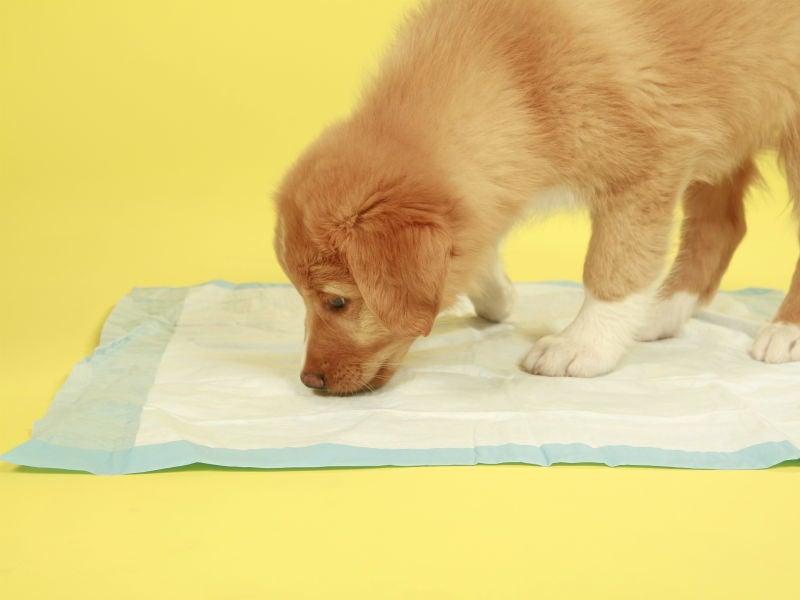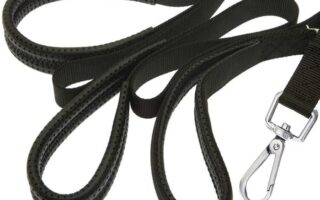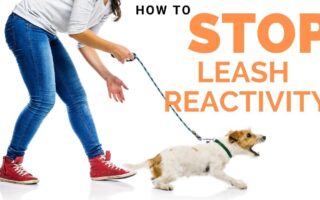Puppy Potty: Navigating the Journey of House Training
Welcoming a furry companion into your home is a joyous experience filled with wagging tails and playful antics. However, along with the delightful moments comes a crucial aspect of pet ownership that often causes a stir: potty training. Establishing good bathroom habits for your puppy is not just a matter of convenience; it’s an essential part of building a harmonious relationship between you and your new friend. From understanding their natural instincts to selecting the right training tools, this article delves into the intricacies of puppy potty training. Whether you’re a seasoned dog owner or a first-time puppy parent, join us as we explore effective strategies to guide your pup to success, transform challenges into learning opportunities, and ultimately create a clean, happy home for you and your beloved companion.
Table of Contents
- Understanding Puppy Potty Training Essentials
- Creating a Consistent Schedule for Success
- Identifying Signs That Your Puppy Needs to Go
- Choosing the Right Tools and Techniques for Potty Training
- Q&A
- To Wrap It Up
Understanding Puppy Potty Training Essentials
Puppy potty training is an essential part of raising a well-behaved dog and involves consistency, patience, and a little bit of strategy. It’s crucial to establish a routine for your puppy, as dogs thrive on repetition and predictability. Here are some key components to consider:
- Establish a Schedule: Regular feeding times lead to regular potty times.
- Designate a Potty Area: Choose a specific spot outdoors for your puppy to relieve themselves.
- Use Positive Reinforcement: Reward your puppy immediately after they go in the appropriate place.
- Watch for Signs: Learn to recognize cues that indicate your puppy needs to go.
- Be Patient: Accidents will happen; it’s important to remain calm and encouraging.
To further aid in your puppy’s potty training, consider employing the use of a chart to track progress. Below is a simple example of what such a chart might look like:
| Date | Time | Location | Success? |
|---|---|---|---|
| 2023-10-01 | 8:00 AM | Backyard | ✔️ |
| 2023-10-01 | 12:00 PM | Living Room (Accident) | ❌ |
| 2023-10-01 | 6:00 PM | Backyard | ✔️ |
Through tracking your puppy’s habits, you can adjust your training techniques as necessary. This not only helps in correcting any recurring issues but also builds a strong foundation for their future behavior.
Creating a Consistent Schedule for Success
Establishing a structured routine is essential for effective puppy potty training. Puppies thrive on consistency, and having a clear schedule helps them understand when it’s time to relieve themselves. Start by:
- Setting specific times for potty breaks — Aim for regular intervals, such as every two hours.
- Designating a consistent spot — Always take your puppy to the same area outside to encourage them to go.
- Monitoring food and water intake — This helps predict when your puppy will need to go out.
Moreover, utilizing positive reinforcement can significantly enhance your puppy’s understanding of the expected behavior. When your puppy successfully uses the designated area, be sure to:
- Offer treats immediately — It reinforces the action in their mind.
- Give plenty of praise — A happy tone and enthusiasm go a long way!
- Stay patient and consistent — All puppies learn at their own pace, so keep a steady approach.
Identifying Signs That Your Puppy Needs to Go
Understanding your puppy’s behavior is crucial for successful potty training. Some common signs that suggest it’s time for a bathroom break include:
- Sniffing or Circling: Your puppy may engage in sniffing around the floor or repeatedly circling in place, which often indicates they are searching for a suitable spot.
- Whining or Barking: Vocalizations can be a clear signal of discomfort or the need to relieve themselves, particularly if they’re not normally chatty.
- Restlessness: If your puppy seems agitated, pacing, or having difficulty settling down, it might be time to head outside.
Additionally, keeping a close eye on your puppy’s routine and habits can help identify when they particularly need a potty break. Noticing the timing in conjunction with the following signs can enhance your training approach:
| Behavior | Indication |
|---|---|
| Sniffing | Ready to go out |
| Whining | Need immediate relief |
| Crouching | About to urinate |
| Pacing | Trying to hold it in |
Choosing the Right Tools and Techniques for Potty Training
When embarking on the journey of potty training your puppy, selecting the right tools and techniques is crucial for success. Start by considering potty pads or grass patches, which can serve as a designated area for your puppy to relieve themselves, both indoors and outdoors. These products help establish a consistent location for potty breaks while minimizing accidents throughout your home. Here are a few popular options:
- Disposable Potty Pads: Easy to use and convenient for indoor training.
- Reusable Potty Pads: Eco-friendly alternatives that can be washed and reused.
- Outdoor Grass Patches: Mimic grass and help your puppy feel more comfortable in their designated potty area.
In addition to the physical tools, it’s important to employ effective techniques during training. Creating a consistent routine is key. Puppies thrive on repetition and structure, so aim to take them outside or to their designated potty spot frequently. A well-timed schedule could look something like this:
| Time Interval | Activity |
|---|---|
| After eating | Take outside immediately |
| After waking up | Take outside promptly |
| Every 1-2 hours | Routine breaks for potty |
Using positive reinforcement is another effective technique. Reward your puppy with praise or treats immediately after they successfully use the potty area, reinforcing their good behavior and forming a positive association with the process. Patience and consistency with your tools and methods will set the foundation for a well-trained puppy.
Q&A
Q&A: The Ins and Outs of Puppy Potty Training
Q1: What is puppy potty training, and why is it important?
A: Puppy potty training is the process of teaching your new furry friend where and when to relieve themselves. It’s essential because it fosters good hygiene, helps prevent behavioral issues, and reinforces the bond between you and your puppy. A well-trained pup is a happier pup—and a happier household!
Q2: At what age should I start potty training my puppy?
A: You can start potty training your puppy as early as 8 weeks old. At this age, they will begin to learn about their environment and can start associating specific areas to relieve themselves. Remember, patience is key, and accidents are part of the learning curve!
Q3: What are some effective methods for potty training a puppy?
A: There are several popular methods for puppy potty training, including:
- Crate Training: A crate provides a safe space for your puppy. Dogs instinctively avoid soiling their sleeping area.
- Regular Outdoor Breaks: Encourage your puppy to go outside frequently, especially after meals, playtime, and naptime.
- Positive Reinforcement: Reward good behavior with treats and praise when your puppy goes in the right spot.
- Utilizing Puppy Pads: If you live in an apartment or lack easy access to the outdoors, using puppy pads can be a helpful interim solution.
Q4: How long does it typically take to potty train a puppy?
A: Every puppy is different, but on average, it takes around four to six months to fully potty train your puppy. Consistency, patience, and understanding of your puppy’s needs will greatly influence the speed of the training process.
Q5: What should I do if my puppy has an accident in the house?
A: First and foremost, stay calm. Clean up the mess using enzymatic cleaners to eliminate odors that might encourage repeated behavior in the same spot. Avoid punishment, as scolding can create fear and confusion. Instead, reinforce desired behaviors when your puppy goes potty outside or on the pad.
Q6: Can certain breeds be easier to potty train than others?
A: While individual personalities play a significant role, some breeds are indeed known for being quicker learners. In general, highly intelligent breeds may catch on faster, while stubborn or independent breeds might require more time and patience. Regardless of breed, every puppy can be successfully trained with dedication and the right techniques.
Q7: What signs indicate that my puppy needs to go potty?
A: Look out for behaviors such as sniffing around, circling, whining, and pacing. If your puppy suddenly becomes restless or heads toward the door, it’s likely time for a bathroom break. Observing their habits closely will help you identify when they need to go.
Q8: Is it possible to train an adult dog that’s not potty trained?
A: Absolutely! While the process may take a bit longer than with a puppy, many adult dogs can learn new tricks. Use the same consistent methods, positive reinforcement, and be patient. The key is understanding the dog’s past experiences and providing them with a fresh start.
Q9: What should I do if my puppy refuses to go potty outside?
A: If your puppy is hesitant to do their business outside, consider factors like distractions, fear of the environment, or even discomfort with weather conditions. Try taking them to a quieter area, providing more time for sniffing around, or even bringing along a favorite toy for comfort. If issues persist, consulting with a veterinarian or dog trainer may provide additional strategies.
Q10: Any final tips for successful puppy potty training?
A: Consistency and routine are crucial! Stick to a schedule for feedings, outdoor breaks, and bedtime. Be patient, stay positive, and don’t hesitate to celebrate small victories. Remember, puppy potty training is a journey—enjoy the bonding experience along the way!
To Wrap It Up
As we conclude our exploration of the ins and outs of puppy potty training, it’s clear that patience, consistency, and a little creativity can go a long way. Armed with the right knowledge and tools, you can turn this essential phase of your puppy’s life into a positive experience for both of you. Remember, every pup learns at their own pace, so celebrate the small victories along the way. With a well-curated routine, plenty of encouragement, and the occasional treat, you’ll not only tackle the challenges of potty training but also deepen the bond between you and your furry friend. Here’s to many joyful moments—and fewer messes—on your journey together!



